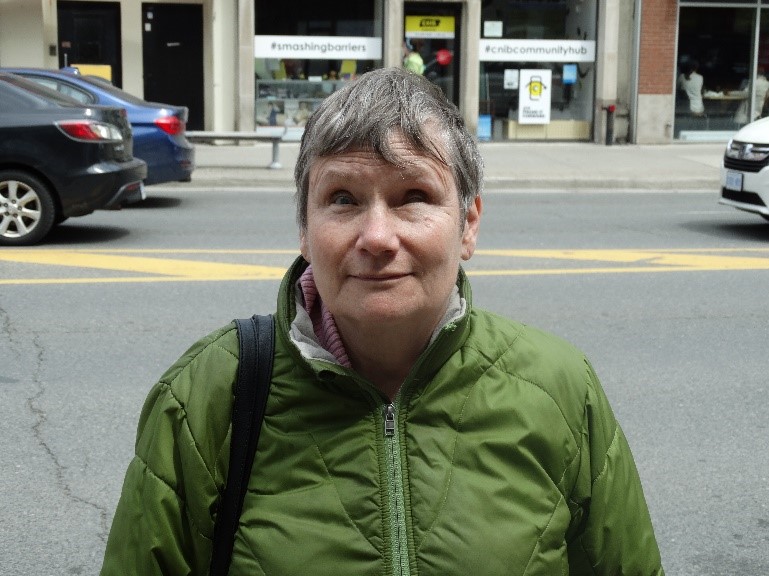After 31 years with CNIB, Debbie Gillespie prepares for retirement and reflects on her time with the organization and the advocacy campaigns she's worked on.

What was your first year like at the organization?
I joined CNIB in June 1988 as a braille proofreader. I had to take the braille transcribers course, so the first year was full of learning.
How many different roles have you had?
I started my career as a braille proofreader before I became the coordinator of the proofreading unit. Following that, I spent about 20 years as the manager of braille publishing and quality management. Then, I became an accessibility consultant and taught courses on web accessibility. From there, I hosted braille workshops across the country. In 2013, I joined the strategic relations and engagement team. Three years later, I worked at the Toronto Community Hub as the built environment and transit advocacy lead for the CNIB Foundation.
What was your last year like at CNIB?
I was always on the move and busy working on new initiatives, which was exciting. I spent a lot of time building relationships with stakeholders in the digital space, wayfinding space, and in the advocacy side of things.
Looking back on your career, what are some of the things you're most proud of?
That's a hard one! I would say that being part of the team that helped develop braille bank statements for RBC back in 1991 is up there. They were the first bank in Canada to offer braille bank statements. From there, other companies started producing braille statements.
Why does advocacy matter?
Advocacy means more independence. It's the fundamental piece as to why you're advocating. As a blind or partially sighted person, your daily life is affected by what you can and can't do, such as the point of sale kiosk that you can't use or information that you can't access. Advocacy is making sure the infrastructure is in place so you don't have to ask for assistance – it's the vehicle to independence.
How have the advocacy issues you've worked on changed over the years and how as your approach to advocacy changed?
All the issues that people have advocated for are still relevant, but it gets more complicated with time because there are new issues and new layers added to the mix. New things pop up as societies and technology evolve. Things like accessible pedestrian signals – they had to be invented before you could advocate for them!
What will you miss the most about CNIB?
I'll miss being involved in groundbreaking initiatives that CNIB consults on. I'll miss being a part of that. I still want to make a difference in people's lives.
What's one piece of advice you would share with young advocates with sight loss?
Don't be afraid to ask questions and say what you need. Advocacy is a long process – it's not instant. With each advocacy campaign or initiative, you will learn something in the process to use for the next time you wish to advocate.
Read more articles from the June 2019 issue of Equalize:
- Guide Dog AdvoCamp
- Protecting guide dogs' rights in schools
- CNIB Foundation Ontario “Know Your Rights” Project Update
- Commitments to Accessibility and Inclusion in Federal Budget 2019
- Calling all advocates!
- The BlindSquare Experience
Equalize is published quarterly. Missed an issue? Catch up here!
Get the latest updates by following us on Facebook and Twitter.
